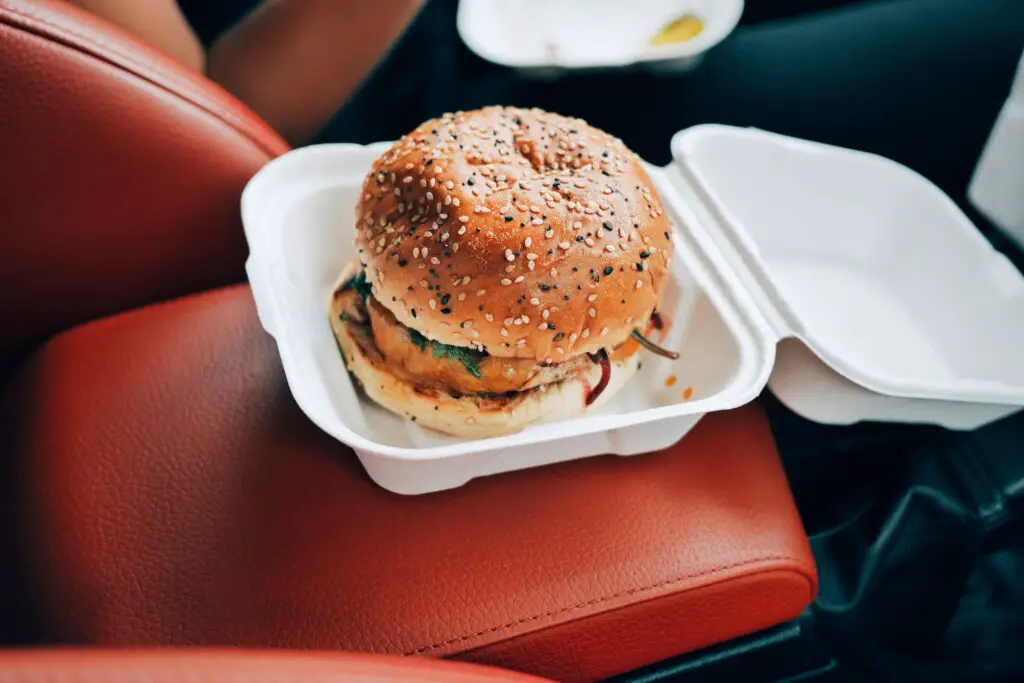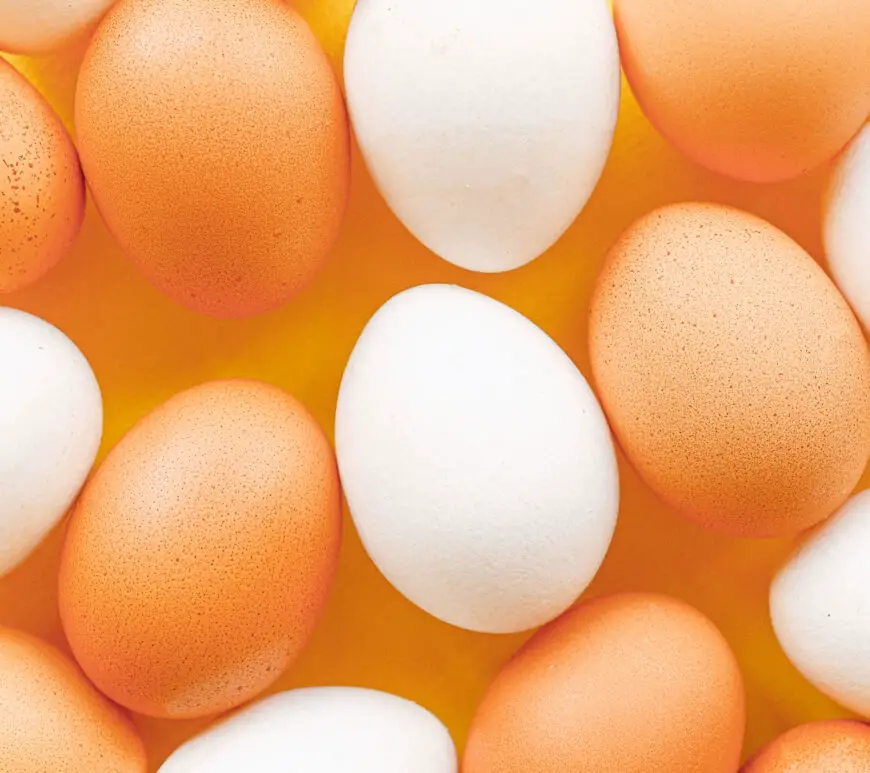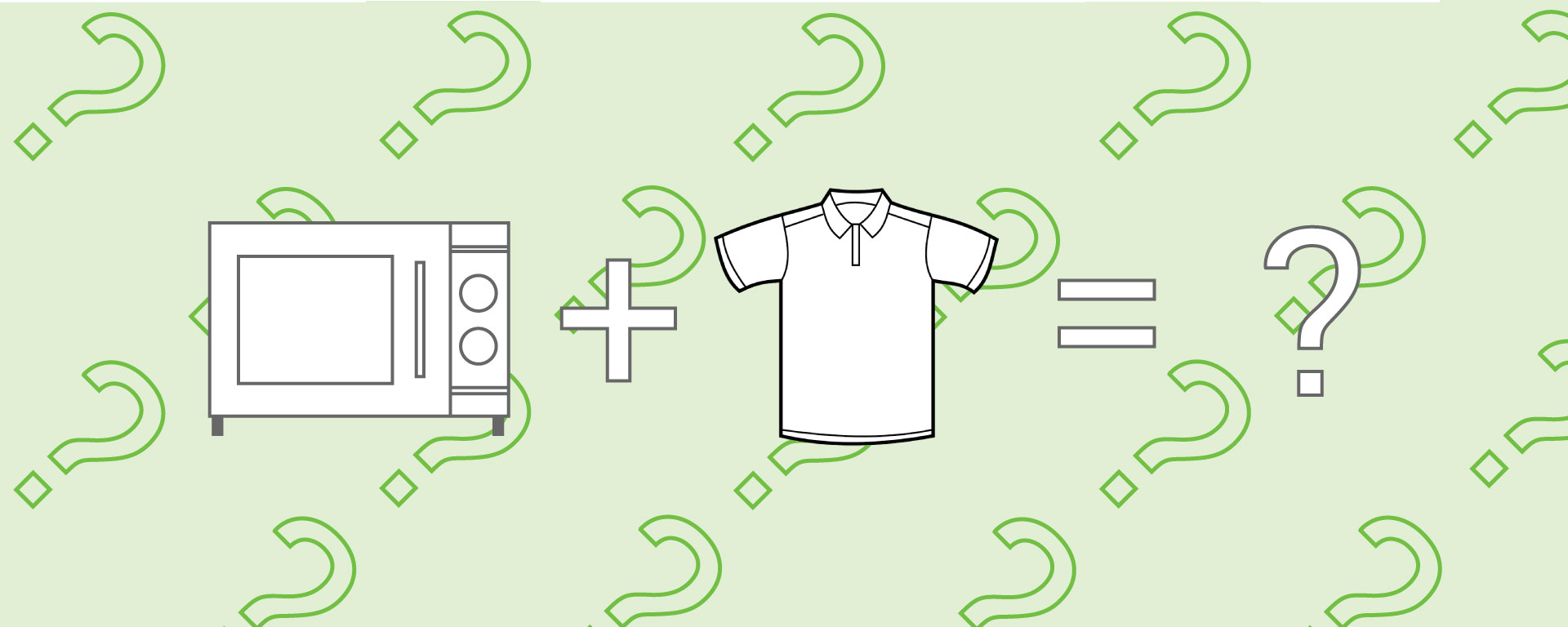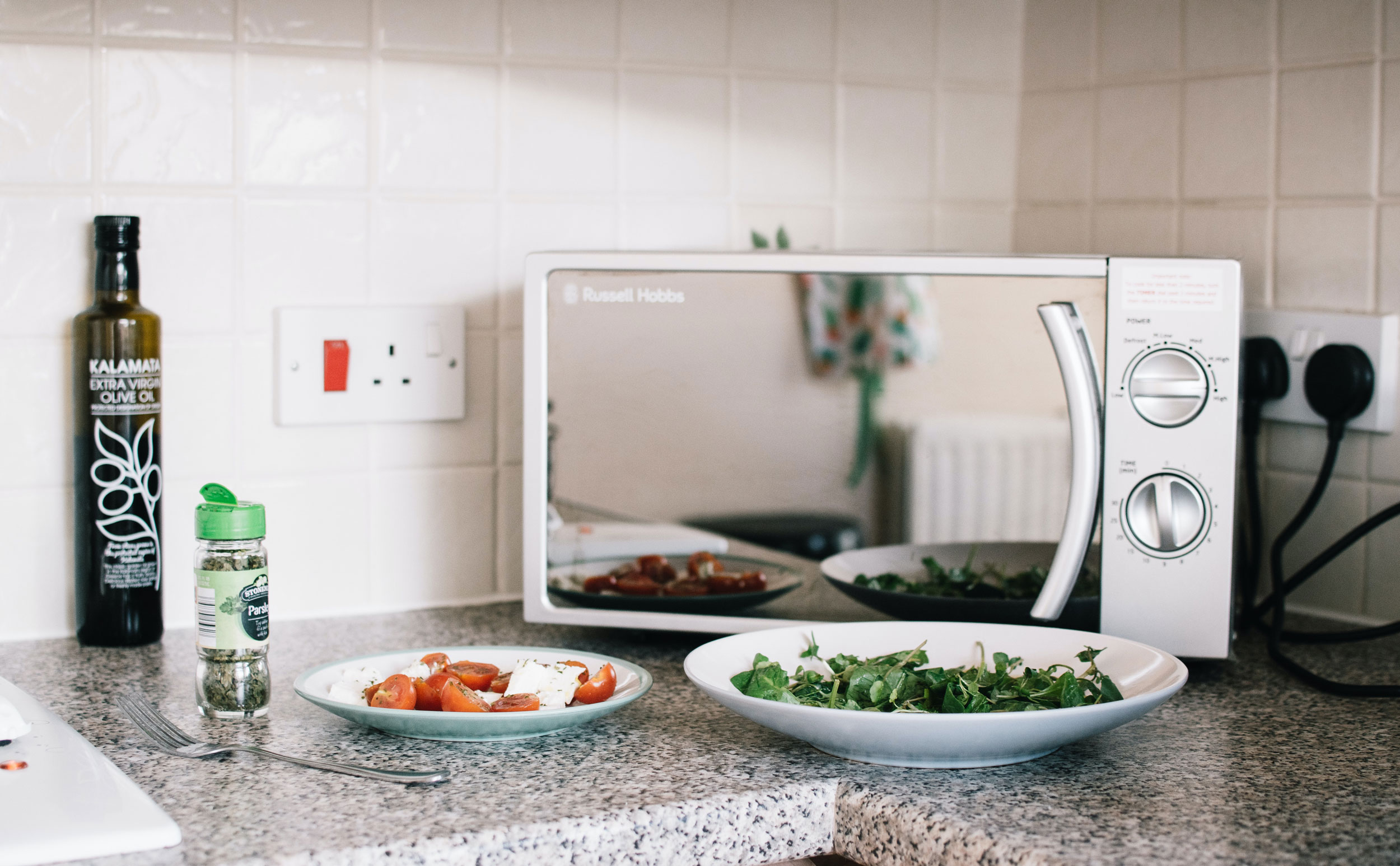From fires to explosions to carcinogens to nastiness, there are some things that you should never – and we mean NEVER – be placed inside a microwave. Things like:
1. Anything made with metal

You’ve probably heard this one already, but this warrants repeating: never put metals inside the microwave. Here is the science behind it:
Microwave ovens use microwaves to heat food; water, fats, and sugars absorb these waves while most plastics, glass, and ceramics don’t. Metals don’t absorb these waves as well. Instead, they reflect them.
If you put food in a metal container inside a microwave, it will end up not heating the food as the metal container will shield it from the microwaves.
But cold food will be the least of your problems.
See, when microwaves get reflected, it will result in electricity arcing inside your microwave oven. This can fry the electronics inside and destroy your unit, or it may cause kitchen fires. So whatever you do, don’t put cans, metal trays, or spoons and forks inside your microwave.
2. Aluminum Foil

This is already covered in item #1, but this deserves special mention since it’s a common material to wrap party leftovers in.
As stated earlier, metal reflects microwaves. But for thin metal materials like aluminum foil will get overwhelmed by the microwaves, causing them to overheat, and eventually to flames.
If the foil is crumpled, it can also create sparks that can damage your microwave oven.
3. (Some) Plastic Containers

Not all plastic containers are made equal.
When heated, some types of plastic can leach harmful compounds such as Bisphenol A (BPA) and phthalates, which can disrupt your hormones and cause endocrine and metabolic diseases. [1]
To be safe, check the plastic container if it has a label that indicates that it’s safe to use in a microwave oven. To be even safer, transfer your leftovers to a glass bowl when reheating.
4. Styrofoam

Styrofoam is another type of plastic that won’t sit well inside a microwave. Not only will it leach BPA and phthalates in your food, it will also melt in the microwave when heated. Talk about nastiness.
5. Paper Bags

Well, it depends on the type of paper; generally, paper towels, parchment papers, and paper plates are fine.
Brown paper bags are a no-no because they can’t take the heat and will catch on fire. They can also emit toxic fumes.
Newspapers are just plain unsanitary and will leach ink and other chemicals to your food. Don’t do it!
6. Whole Eggs

There is a reason why you shouldn’t microwave items in an airtight container; the water in foods can turn to steam, but with nowhere to go out, it will continue to build pressure until it explodes.
An egg is a natural airtight container. Which is why you shouldn’t put a raw egg inside the microwave (and why would you?), and peel and puncture hard-boiled eggs before nuking them.
7. Grapes (And Other Fruits)

Another example of naturally airtight containers are fruits. Fruits have high water content which will turn into steam when heated; steam that won’t have a place to come out off. Eventually, this will cause an explosion. While it won’t destroy your microwave, it will be quite annoying to clean.
Fruits are not usually microwaved, but if you have to, then peel them and poke holes in them to let out steam when they’re heated.
Oh, and grapes turn into hot glowing plasma balls when microwaved:
8. Cup of Water

We’ve all thought of this before.
While yes, your water will get hot quicker in the microwave than in a kettle, it is also more dangerous.
Microwaved water won’t show signs that its boiling. No steam, not rolling waters – but be careful, that water is already super-heated!
When you add another thing to the water (like sugar, tea, or coffee) it could boil all at once – resulting in an explosion that can cause severe burns.
BONUS: Don’t turn on your microwave with NOTHING inside it
It may be a bad case of ‘senior moment’ or just plain curiosity – but turning on your microwave with nothing inside it can destroy a perfectly good appliance.
Since there is nothing inside to absorb the microwaves, the waves will end up bouncing around the cavity, eventually being absorbed by the magnetron – the thing that makes a microwave a microwave – damaging it or even causing fires and explosions.
Sources:
https://science.howstuffworks.com/aluminum-foil-in-the-microwave.htm
https://health.westchestergov.com/bisphenol-a-and-phthalates
https://www.ajc.com/news/national/things-you-should-never-put-the-microwave/vvl2JNyP7i58hvNcwcAD2M/

Miguel Mores worked for 5 years as a member of the product management team for a home appliance company in the Philippines. He started 101appliance to answer the most common customer questions that he has encountered during his time in the industry. He now works in the digital marketing field and manages a small online bookstore on the side.



